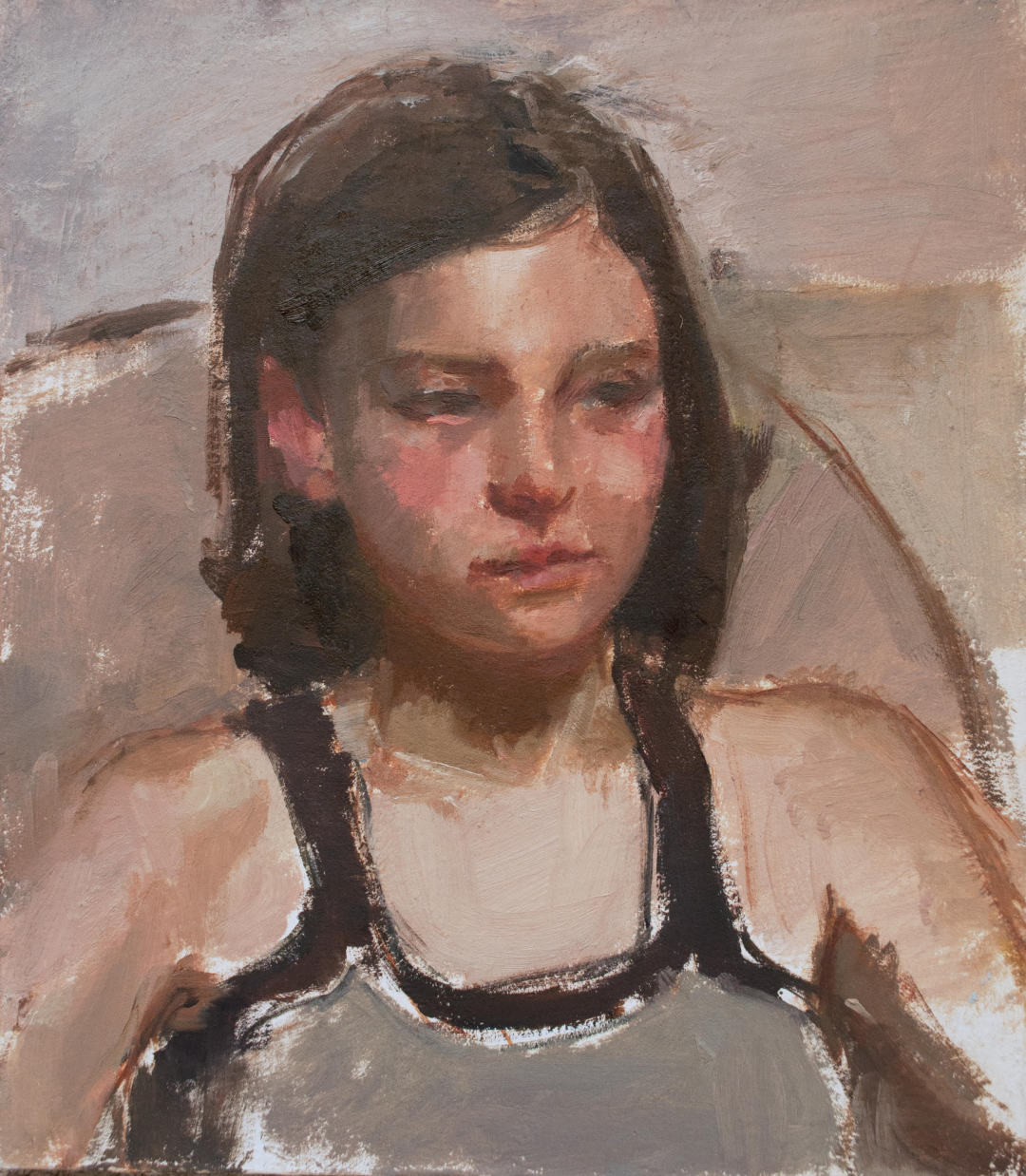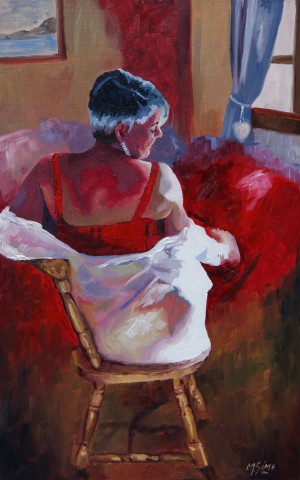Revealing the Keys Behind Meaningful Figurative Oil Painting Styles
Revealing the Keys Behind Meaningful Figurative Oil Painting Styles
Blog Article
The Evolution of Figurative Oil Painting: Comprehending Its Historic Significance and Modern Interpretations
The advancement of figurative oil paint functions as an engaging lens where to analyze the interaction in between creative expression and historic context. From the meticulous naturalism of the Renaissance to the stirring power of the Baroque, each age has actually added layers of meaning and technique to this timeless tool. Contemporary artists, drawing from this abundant heritage, are currently reinterpreting the human number in manner ins which test standard narratives. As we discover these makeovers, one need to think about how the discussion in between previous and present informs not just imaginative method but additionally societal representations in an increasingly intricate world.
Origins of Figurative Oil Paint
The beginnings of metaphorical oil painting can be mapped back to the early Renaissance in Europe, especially in the 15th century. This period noted a significant departure from the flat representations and inflexible kinds particular of middle ages art. Musicians started to check out naturalism, highlighting the human figure and its emotional expression. The development of oil paint allowed for better deepness of shade and information, boosting the realism and vibrancy of their work.

In this transformative age, numbers were commonly shown within contextually abundant settings, showcasing not only their physical qualities yet likewise their mental states. Leaders such as Jan van Eyck and Titian took advantage of the medium's versatility, using layering methods to accomplish luminance and texture. This advancement promoted the portrayal of elaborate materials and the subtleties of complexion, adding to the growth of portraiture and narrative scenes.
In Addition, the Renaissance focus on humanism fostered an admiration for distinctiveness, which in turn affected artists to create more vibrant and relatable figures - figurative oil painting. Because of this, figurative oil painting emerged as an effective automobile for narration and psychological engagement, preparing for future artistic motions and styles
Trick Historical Movements
Considerable historical movements have shaped the advancement of figurative oil painting, each adding one-of-a-kind viewpoints and techniques that increased the tool's possibilities. The Renaissance noted a zero hour, stressing realistic look and the human form, with musicians like Leonardo da Vinci and Michelangelo pressing the boundaries of physiological accuracy and viewpoint. Following this, the Baroque era brought significant contrasts of light and darkness, exemplified by Caravaggio, that instilled religious motifs with intense emotionality.
The 19th century presented Romanticism and Realistic look, where musicians such as Delacroix and Courbet tested classical suitables, concentrating on individual expression and daily life. The development of Impressionism additionally revolutionized the medium by stressing the effects of light and color, bring about a separation from conventional depiction.
In the very early 20th century, activities like Expressionism and Cubism redefined figurative paint with abstraction and the exploration of emotional depth. Each of these movements not just reflected the social adjustments of their times however likewise laid the groundwork for modern analyses. The interaction between these historic motions has produced a rich tapestry of viewpoints and designs, affecting contemporary musicians in their quest of catching the human experience on canvas.
Methods and Products Development

Throughout the Baroque duration, strategies such as chiaroscuro and sfumato arised, boosting the emotional resonance of metaphorical structures. Musicians began to experiment with lusters and impasto, controling appearance and luminance. By the 19th century, developments like the usage of pre-mixed paints in tubes revolutionized accessibility, enabling musicians to paint en plein air and record the short lived effects of light.
The 20th century observed the introduction of artificial pigments and mediums, which broadened the palette and changed the consistency of oil paints. The expedition of brand-new application techniques, such as palette knives and brushes of differing get redirected here rigidity, further varied artistic expression. Jointly, these improvements reflect the evolving relationship between products, methods, and the artistic vision integral in figurative oil painting.

Contemporary Interpretations
Contemporary analyses of metaphorical oil painting reflect a dynamic discussion in between practice and innovation, where artists test developed norms and check out diverse themes. This advancement manifests in various means, as contemporary artists blend timeless techniques with contemporary principles, usually dealing with social, political, and personal stories.
Numerous specialists draw inspiration from historic jobs, yet they infuse their items with modern point of views, making use of the human type as a vehicle for commentary on identity, culture, and gender. Artists increasingly explore abstraction, distortion, and multimedias, which permits a wider analysis of the number and its context.
Furthermore, using dazzling shade palettes and unconventional structures often serves to interrupt traditional viewing experiences, prompting crucial involvement from audiences. This change in focus expands beyond appearances; it mirrors a growing recognition of the intricacies of human experience in an interconnected world.
As figurative oil painting proceeds to develop, it continues to be a vital medium for discovering the nuances of contemporary life, embodying both a respect for heritage and a commitment to modern thought. The outcome is an abundant tapestry of expression that reverberates with the complexities of the modern-day human condition.
Influence On Modern Art
The impact of metaphorical oil painting on contemporary art is profound, as it has actually continually influenced a myriad of imaginative motions and techniques throughout the 21st and 20th centuries. From Expressionism to Surrealism and past, the exploration of the human figure has stayed a central theme, enabling musicians to share intricate emotions and narratives. This emphasis on metaphorical depiction has actually led to a re-examination of conventional strategies, resulting in innovative strategies that mix realism with abstraction.
Moreover, contemporary artists have accepted figurative oil painting as a way to address social and political concerns, utilizing the medium to challenge assumptions of culture, identity, and sex. The resurgence of rate of interest in figurative operate in recent years reflects a hoping for link in a progressively electronic globe, where human experience and feeling are extremely important.
In addition, the dialogue between useful content metaphorical oil painting and modern-day art appears in the jobs of musicians such as Kehinde Wiley and Jenny Saville, who make use of historical references while instilling their pieces with modern relevance. Ultimately, figurative oil painting remains to shape and redefine modern artistic expression, highlighting its long-lasting importance in the art world.
Conclusion
The development of figurative oil paint highlights its historical value and flexibility throughout various imaginative motions. From the naturalism of the Renaissance to the emotive expressions of the Baroque and the ingenious approaches of modernity, this tool has actually continually changed. Contemporary interpretations mirror unconventional compositions and vivid colors, cultivating essential involvement with social and political styles. Inevitably, figurative oil read the article painting continues to be a crucial tool for exploring the human experience, reverberating profoundly in today's digital landscape.
The evolution of figurative oil paint offers as a compelling lens through which to check out the interaction between artistic expression and historic context.Considerable historical movements have formed the evolution of figurative oil painting, each adding distinct approaches and methods that increased the tool's opportunities.As historical motions shaped the trajectory of figurative oil paint, the methods and materials utilized by artists have actually likewise gone through significant makeovers. figurative oil painting.The influence of metaphorical oil paint on modern art is profound, as it has actually consistently influenced a myriad of artistic movements and practices throughout the 21st and 20th centuries.The advancement of metaphorical oil painting underscores its historical significance and flexibility across numerous imaginative movements
Report this page